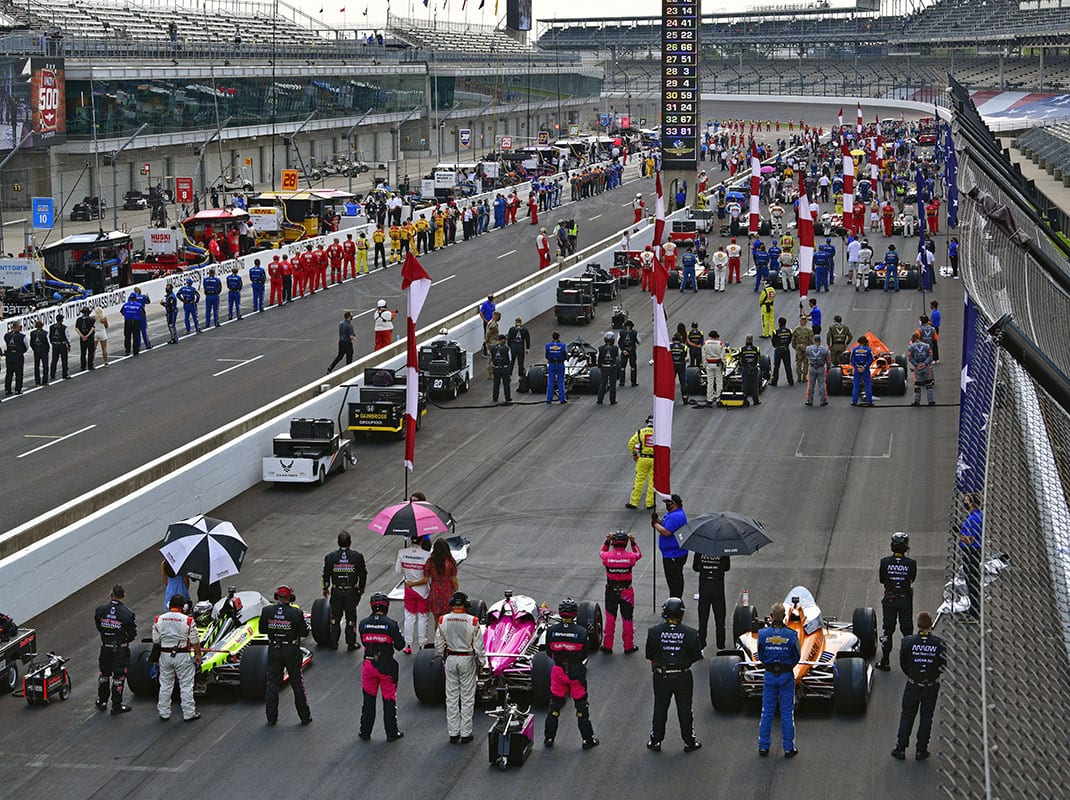It was mid-March and it was to be the first really big racing weekend of the new season.
Formula One was kicking off its campaign in Australia while the NTT IndyCar Series was getting underway with the Firestone Grand Prix of St. Petersburg and NASCAR’s three national touring series were preparing to tackle Atlanta Motor Speedway.
The NBA, NHL and college basketball shut down because of the rapid spread of COVID-19 and motorsports followed suit around the world.
Race cars sat idle for several weeks as many of the sport’s biggest events were postponed or canceled.
It was nearly two months before on-track action resumed. And when it did, racing was different — in many ways.
Short-track racing came back first with a series of events without fans that were streamed live via pay-per-view over the internet. The World of Outlaws NOS Energy Sprint Car Series returned to competition with no fans May 8 at Knoxville (Iowa) Raceway. Soon, most of the country’s short-track series were back in action, and fans slowly began returning, though in limited numbers in most places.
Race-track attendance in states such as Ohio and North Carolina was seriously restricted throughout the season, while tracks in New York and California went without fans for the remainder of the year. In other places, larger crowds were allowed.
The story was a little different for the world’s higher profile racing series, as sanctioning bodies and track operators had to get creative to get back on the track.
Those with the benefit of substantial television contracts were able to do so sooner, but that television exposure also meant strict CDC and local health department guidelines needed to be followed.
With entry limited only to essential personnel, NASCAR returned to competition on May 17 at Darlington (S.C.) Raceway with the NASCAR Cup Series resuming its season. With masks, temperature checks, restricted access and no fans, NASCAR successfully ran 20 races for its three national divisions through June 21.

With a fluid schedule that was released in batches, the sanctioning body made multiple appearances at some tracks but was unable to visit many of its longtime mainstays.
NASCAR’s television partners — FOX and NBC — were vital in keeping all three national touring series on the track as the pandemic wore on.
As late summer arrived, a few fans began to be permitted at some stops on the tour and, with the help of midweek races, doubleheaders and other creativity that included racing on the road course at Daytona Int’l Speedway, the Cup Series wrapped up its regular season on schedule.
Ten weeks of playoff racing followed with Chase Elliott claiming the series championship Nov. 8 at Arizona’s Phoenix Raceway.
“What we have done during this global pandemic is I think nothing short of remarkable,” said NASCAR President Steve Phelps prior to the season finale. “We can’t do what we did as a sport without coming together. I want to thank the race teams, the race tracks, both those that we own that are part of NASCAR, but importantly the folks at Speedway Motorsports, Pocono, Dover, Indianapolis. Frankly, all of our partners, right? Our media partners, our sponsors, everyone that really banded together to create something that was really something to be proud of.”
Another series that completed its full calendar was the Monster Energy AMA Supercross series, which ended its season in a bubble by racing seven times during a 22-day period (between late May and mid-June) at Salt Lake City’s Rice-Eccles Stadium. All events were shown on NBC networks.
Click below to continue reading.
